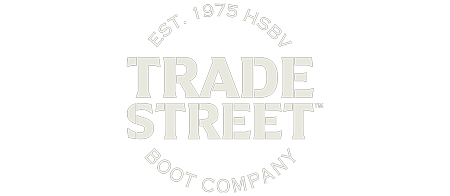May 24, 2024 /
Are Hiking Boots Good for Work?

In the wide world of boots, distinguishing between types designed for specific activities can be quite a task. However, understanding these differences is crucial, especially when considering wearing hiking boots for work. In this exploration, we dive into the question of are hiking boots good for work or not, with the intent of helping you decide on whether maintaining a pair for work and play is an ideal choice.
Anatomy of a Boot: Hiking vs. Work
Hiking boots are crafted with adventure in mind. They prioritize comfort, durability, and the ability to withstand varied terrains. While a flexible sole and a soft toe are common features aimed at facilitating long walks and climbs, the necessity of a stiffer sole increases with the amount of weight carried and the unevenness of the terrain. This ensures adequate support and stability during more demanding hikes.
Key Features of Work Boots and Compliance with Safety Standards
Work boots, on the other hand, are silent heroes of everyday life. Designed to conform to strict safety standards, these boots often include features like safety or steel toes, waterproof materials, and enhanced traction to endure the harsh conditions of work environments like construction sites and manufacturing floors. They prioritize protection and are equipped with soles that vary in stiffness depending on the work conditions. For tasks involving minimal weight carrying on flat surfaces, a more flexible shoe may suffice. However, if using a shovel, standing on a ladder, or navigating a hillside, a stiffer shoe is essential to ensure safety and support.
When Hiking Boots Meet Workplaces
In less hazardous work environments, such as light construction or landscaping, the hiking shoe or mountaineering boot might just be the perfect fit. Their breathability and lighter build make them ideal for jobs requiring a lot of walking or standing, blending trail running comfort with work-required functionality.
Limitations of Hiking Boots in Heavy-Duty Work Environments
However, when it comes to more demanding tasks, such as those found in heavy construction or logging, traditional hiking boots and boots with lighter weight uppers may fall short. The absence of a composite toe or adequate puncture protection in many hiking designs could be a deal-breaker in environments where safety hazards are prevalent.

Comparative Analysis
The best hiking boot is designed to last through countless trails, but how long do hiking boots last in a daily work setting? Given that most pairs are built to endure the rough and tumble outdoors, hiking boots can last well at work, given it's under the right circumstances. With proper care, a waterproof hiking boot can offer extended durability, even in adverse work conditions.
Traction and Stability on Different Terrains
One cannot overlook the superior traction provided by both hiking and tactical boots. This feature is essential, whether navigating a rocky hill or maneuvering through a construction site, making hiking boots a viable option for work in varied terrains.
Comfort and Usability: Weighing the Pros and Cons
When it comes to daily wear, the lightweight nature of many hiking boots makes them a preferred choice for jobs that involve extensive walking. Unlike the heavier logger boots, hiking footwear won’t weigh you down.
Ergonomic Considerations for Prolonged Use
Ergonomically, hiking boots are designed to support the foot in a more natural position during walking, which can be beneficial for individuals spending long hours on their feet. However, the lightweight nature of how hiking boots fit means modest ankle support, and the lack of this rigid feature commonly found in work-specific footwear might not be ideal for everyone, especially in jobs requiring heavy lifting.
Innovative Hybrid Boots
The footwear industry has noticed the demand for versatile boots and responded with hybrid designs that merge the comfort of hiking boots with the safety features of work boots. These innovative solutions are transforming footwear standards, making it easier to transition from trail to task without changing shoes.
Through small adjustments like different boot lacing techniques or combining the pair with specialized socks, hybrid boots can be transitioned back and forth from work to hiking.
Selection Criteria for Dual-Use Boots
Deciding whether or not hiking shoes are good for work or not comes down to understanding the specific demands of your job. Evaluate the environmental conditions, potential hazards, and the amount of time spent on your feet to determine if a hiking or a hybrid boot is the right choice for you.
A Buyer’s Guide to Finding the Best Hybrid Boots
When shopping for boots that can handle both work and play, look for listed features like a safety toe, waterproof materials, and high levels of durability. These features, coupled with a design that includes elements from both hiking and work boots, will ensure that you invest in footwear that doesn’t just meet your expectations but exceeds them.
With so many types of boots to choose from, the lines of functionality can get a bit blurred. Whether you're scaling mountains or scaffolding, the right pair of boots can make all the difference in your performance and protection. As we continue to navigate these overlapping needs, one thing remains clear: knowing what to look for in hiking boots and work footwear and discovering them both in just one pair is an adventure in itself, one that can be fulfilled at Bootworld.










